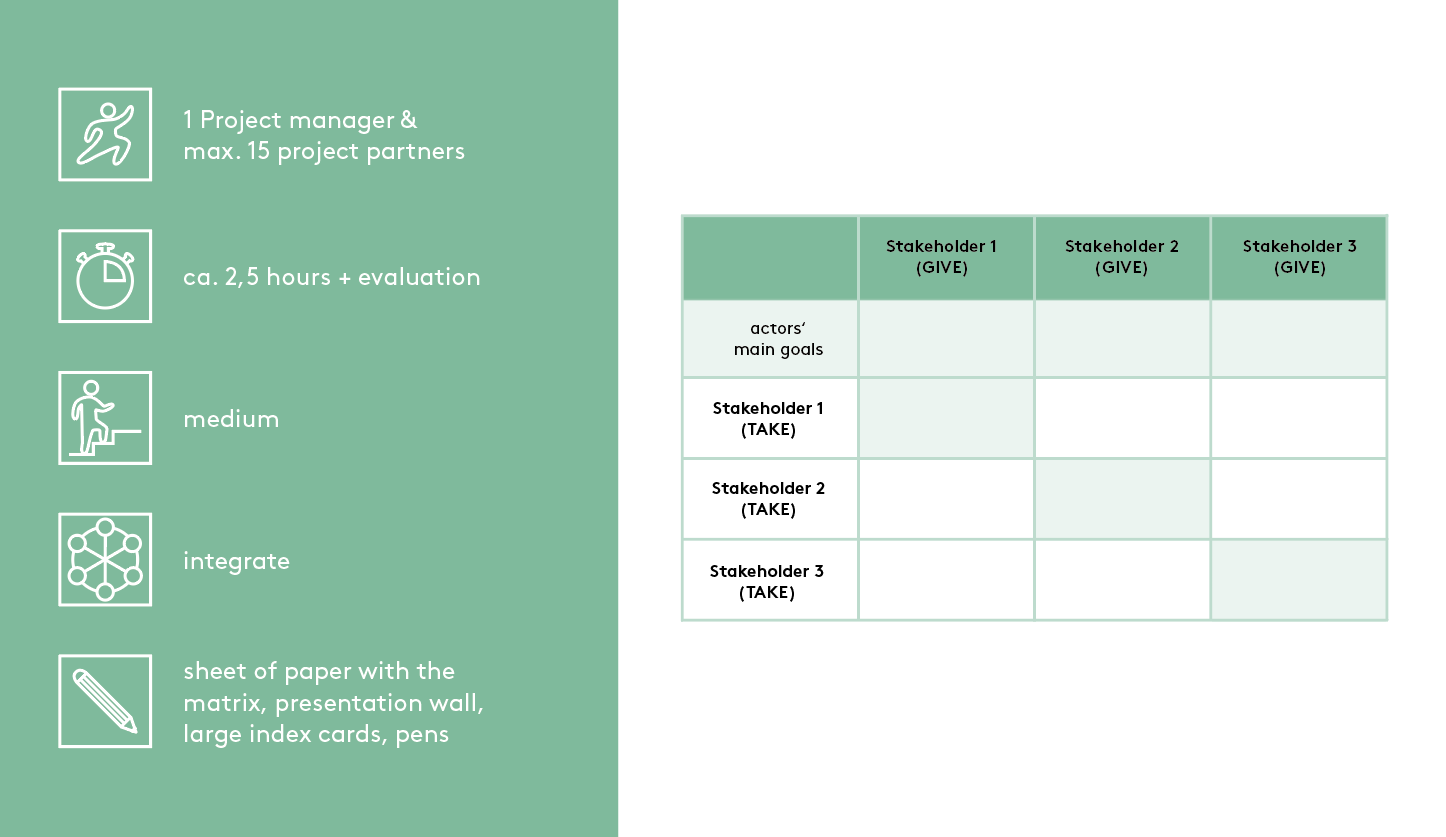
Step-by-Step
At least one representative from each project partner should participate in the workshop.
1. Create a matrix with the names of the project partners on the horizontal and vertical axis. The horizontal axis can be considered as "GIVE" and the vertical axis as "TAKE". The expectation matrix is therefore also known as the give-and-take matrix.
2. At the beginning, each actor defines his/her main goal in the project and writes it in a horizontal line under his/her name.
3. Each actor fills in the intersections of the matrix that concern him/her as follows - TAKE: What do I want to get from each of the other project partners or what do I expect from them? GIVE: What competences, services or contacts can I offer to the other project partners?
4. The first actor starts with the presentation of the desired TAKEs and proposed GIVEs. The other project participants react to the extent to which the expectations can be fulfilled.
5. Evaluate the matrix together afterwards: Which expectations are met? Which ones are not met? What contribution can be delivered even though it is not expected?
6. Make sure together that no roles are left out. Define clear responsibilities and open expectations and derive specific follow-up tasks for all participants.
More about the tool
Testimonial



